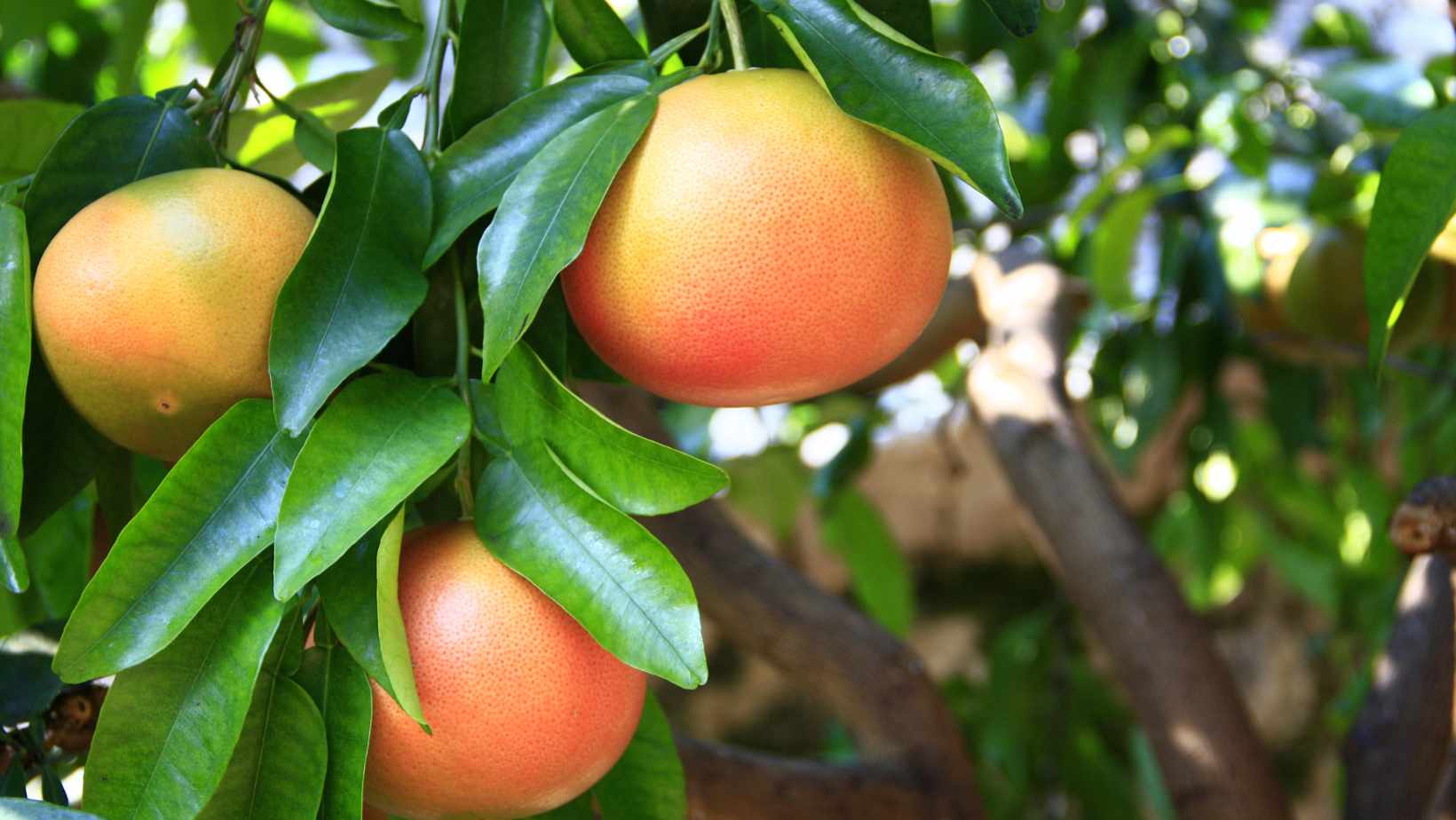To ensure your grapefruit stays fresh and ripe for longer, it’s important to store them properly. In order to control the ripening process and avoid spoilage, this section on ‘How to Store Grapefruit Properly’ with ‘Importance of Proper Storage, Ideal Storage Conditions for Grapefruit, and Common Storage Mistakes to Avoid’ as solutions, will help you keep your grapefruit fresh and delicious for a prolonged period of time.
Importance of Proper Storage
Properly storing grapefruit improves its shelf life and maintains its quality for consumption. Adequate measures protect the fruit from spoilage-causing factors such as moisture and air exposure, preserving its freshness, taste, and nutritional benefits.
To store grapefruit correctly, choose a dry and cool place away from direct sunlight or heat sources. Place the fruit in a ventilated container or perforated plastic bag to reduce moisture build-up and prevent mold growth. Label the container with the storage date to keep track of freshness.
Additionally, storing grapefruit at room temperature instead of refrigeration hastens over-ripening due to ethylene gas production.
Ensure that you consume stored grapefruits within two weeks to avoid any potential health hazards related to spoilage. Enjoy the fruit’s benefits while taking precautionary measures for safe storage.
Don’t miss out on enjoying fresh grapefruit by improperly storing them. Follow these simple steps to preserve your grapefruits’ quality, flavor and nutrition for longer-lasting enjoyment.
Give grapefruit the VIP treatment they deserve – store them in cool, dry conditions like they’re royalty, not just another fruit in the basket.
Ideal Storage Conditions For Grapefruit
To Maintain Grapefruit Freshness Table shows ideal grapefruit storage conditions.
| CONDITION | DETAILS |
| Temperature | 8-10°C (46-50°F) |
| Humidity | 90-95% RH |
| Ventilation | Good air circulation |
To keep the quality of grapefruit, store them under proper conditions. Maintain a cool temperature of around 8-10°C (46-50°F), with high humidity levels between 90-95% RH. Ensure good air circulation for extra freshness. For long-lasting grapefruits, follow some suggestions to extend their shelf life. Place the fruit in a moisture-proof container in the fridge, or wrap them individually in plastic bags and store on the refrigerator’s shelves to avoid being squashed. If you have already cut the fruit, place it in an airtight container and refrigerate it for up to three days. These storage tips will help maintain grapefruit flavor and freshness for longer periods. Storing grapefruit with your socks might save space, but it won’t do your taste buds any favors.
Common Storage Mistakes to Avoid
Many errors can occur when storing grapefruit, causing the fruit to spoil or lose its freshness. Here are some important things to avoid when storing grapefruit.
- Keeping grapefruit at room temperature for an extended period can decrease its quality.
- Exposing grapefruit to sunlight and extreme temperatures can speed up the fruit’s deterioration process.
- Storing grapefruit with other fruits that release ethylene gas can cause it to overripe quickly.
- Using airtight containers or bags for storage, which will trap moisture and lead to mold growth.
To keep your grapefruit fresh, remember to avoid these common mistakes. It is necessary to store them in a refrigerator, away from any direct sunlight. Additionally, placing a damp paper towel around the fruit before storing it inside the fridge will guarantee better preservation.
Grapefruits were first discovered in Barbados by Captain Shaddock in 1693 and were referred to as “forbidden fruit.” Today, they are one of the most extensively cultivated citrus fruits worldwide and are rich in vitamin C and antioxidants.
Nobody wants to bite into a grapefruit that’s gone bad, unless you’re into the whole sour and moldy flavor profile.
Signs of Spoiled Grapefruit
To identify if your grapefruit has gone bad, you need to examine its physical appearance, smell, texture, and taste. In order to help you with this, the section on “Signs of Spoiled Grapefruit” with “Physical Appearance of Spoiled Grapefruit, Smell of Spoiled Grapefruit, Texture of Spoiled Grapefruit, and Taste of Spoiled Grapefruit” as solutions briefly, will provide you with the necessary information to identify whether your grapefruit has spoiled or not.
Physical Appearance of Spoiled Grapefruit
Spoilage Appearance of Grapefruit
Grapefruits have a distinct appearance when they spoil, giving them an unappetizing look.
Here are some signs of spoiled grapefruit:
- Discoloration: The fruit’s skin, once smooth and even-toned, appears discolored with mold spots.
- Texture Changes: Spoiled grapefruit becomes softer or wrinkled than it should be. Alternatively, the outside may become hard and shriveled.
- Mold Growth: Spoiled grapefruit can encourage mold growth not only on the surface but also inside the fruit. This growth causes foul odours as well.
- Funky Odor: Freshly sliced grapefruit has a distinctive fragrance associated with citrus fruits. Spoiled grapefruits, however, produce no such scent or emanate foul smells that can quickly make one nauseated.
It’s important to keep in mind that these are just indications; if in doubt, give the fruit a more thorough check. Their aesthetic can vary depending on various factors such as contamination type and degree.
Did you know grocers avoid keeping spoiled grapefruits alongside ripe ones purposely? Any contact leads to cross-contamination between the two groups of fruits, spoiling healthy ones faster.
If the smell of spoiled grapefruit could talk, it would probably say ‘I’m sour and I know it‘.
Smell of Spoiled Grapefruit
Identifying Rancid Smell of Grapefruit
A telltale sign of spoiled grapefruit is the presence of a rancid smell, indicative of bacteria growth. This odor is unmistakable and overpowering, often making it tough to handle to curb food wastage.
Additionally, another potential indicator could be the change in color and texture. Spoiled fruit often exhibit a mushy and soft texture with brown or grayish colors, which is quite distinct from fresh and juicy ones. These changes are due to the breakdown of pectin and cellulose fibers by an enzyme called pectinase, causing decay.
It’s essential to note that holding unrefrigerated grapefruits for more than seven days increases the risk of spoilage significantly due to improper handling that consists of excessive humidity, temperature fluctuations, lack of ventilation, or dirty storage areas.
If you find yourself in a position where you’ve bought too many grapefruits, it’s advisable to store them properly in a well-ventilated area with low humidity levels and at room temperature for up to five days. However, refrigeration prolongs their shelf life by an additional week.
My cousin had bought several grapefruits before leaving town for a week-long vacation only to come back home with his kitchen filled with ripe fruit odors. He forgot about storing them properly, leading to various degrees of spoilage — all detectable by their highly unpleasant smell alone!
When it comes to spoiled grapefruit texture, you’ll feel like you’re biting into a sad, mushy grenade that’s been hiding in your fridge.
Texture of Spoiled Grapefruit
Grapefruit’s spoiled texture typically indicates changes in the fruit’s appearance, color, and softness. When grapefruit spoils, it becomes squishy and mushy. The outer skin might also show signs of decay, and there may be small spots or blemishes. Moreover, the texture of the flesh inside could feel slimy or sticky to touch.
To identify any spoilage, one can check for a moldy smell that emanates from the grapefruit. Discoloration could be another sign as spoiled grapefruit might show colour changes on the outside or inside. In some cases, surface cracks could also indicate spoilage.
Pro Tip: It’s crucial to store your grapefruit correctly to prevent it from spoiling too quickly. Placing the fruit in a cool and dry location away from sunlight is recommended.
If you’re looking for a taste sensation that’s similar to spoiled grapefruit, just lick a battery and save yourself the nausea.
Taste of Spoiled Grapefruit
Spoiled grapefruit can have a bitter and acidic taste, with a strange aftertaste. The fruit might also have a mushy texture and emit an unpleasant odor, indicating fungal or bacterial growth.
If the grapefruit is visibly moldy or has brown spots, it indicates a deterioration in its quality. In some cases, the skin may feel softer than usual, which can be a sign of spoilage. Avoid consuming spoiled grapefruit as it may lead to health complications and allergic reactions.
Alternatively, to avoid wasting food, use fresh grapefruits while making juice or zest for recipes instead of consuming them if they are rotten. Store the fruit in the refrigerator properly to increase its shelf life and prevent decay. Dispose of any overripe or spoiled fruits safely by composting or disposing of them in the trash.
Remember that consuming deteriorating grapefruit can result in stomach problems and other health-related issues if not addressed immediately. It’s best to store them properly and consume them while they are fresh to avoid potential negative health outcomes.
Keep your grapefruit fresh longer by keeping it away from its spoiled, bitter cousin – the grapefruit with a bad attitude.
Tips to Extend Grapefruit Shelf Life
To extend the shelf life of grapefruits and avoid spoilage, follow these tips for storage and preservation. Start by preparing the fruit prior to storage, then use recommended storage techniques to keep them fresh for longer. Finally, try out various preservation methods to extend their shelf life even further.
Pre-Storage Preparation
Before storing grapefruits, some pre-storage preparations must be taken to extend their shelf life.
Here’s a 3-step guide to prepare grapefruits for storage:
- Wash the grapefruits gently with cool, running water and pat them dry with a clean towel.
- Remove any damaged or blemished areas on the fruit’s surface using a knife or peeler.
- Store cleaned grapefruits in perforated plastic bags in the fridge to prevent dehydration.
To preserve grapefruit quality further, avoid washing them completely of their natural protective coating as it leads to faster spoilage.
A true fact is that storing citrus fruits at a temperature of less than 4°C hinders rot development and extends shelf-life (source: Food Quality and Safety Guidelines).
Give your grapefruit the VIP treatment and store it like it’s a Kardashian – in a cool and dry place.
Storage Techniques
To maintain the quality of Grapefruit, we need to follow effective ways that help in extending its shelf life. Listed below are some techniques that can come in handy:
| Ambient Temperature Storage | Store grapefruit at room temperature if consumption is within a week |
| Refrigerator Storage | Prolongs grapefruit freshness for around two weeks when kept in a refrigerator crisper drawer or compartment. |
| Freezing Storage | Grapefruits may be pulped or segmented and stored in an airtight freezer-friendly package for up to six months. |
Apart from these widely used techniques, it is advised to keep the fruits dry and well-ventilated to prevent spoilage caused by moisture accumulation. In addition, placing grapefruits away from ethylene-producing fruits such as bananas can aid maintaining freshness. A local supermarket reported a surge in grapefruit sales after storing them separately from apples for customers’ convenience, which increased customer satisfaction. Grapefruit may be sour, but with these preservation methods, they’ll stick around longer than your ex’s clingy voicemails.
Preservation Methods
To ensure the longevity of grapefruit, preservation methods can be employed. By following these professional tips, one can extend the shelf life of this fruit.
In a table outlining preservation methods, it has been noted that storing grapefruit in cool and dry conditions, such as a refrigerator or pantry, is effective in slowing down the fruit’s decay. This can add up to an extra month of freshness compared to leaving it at room temperature. Additionally, wrapping each grapefruit individually with plastic wrap provides an added layer of protection against moisture and mold growth.
Unique details that have not been covered include avoiding citrus fruits that are already bruised or damaged as these areas tend to be more susceptible to spoilage. Furthermore, keeping grapefruit away from direct sunlight or heat sources can prevent premature ripening or decay.
According to the United States Department of Agriculture (USDA), “Grapefruit is approximately 88 percent water and high in vitamin C, fiber, potassium, and calcium.” Thus preserving this fruit may help retain its nutritional value for longer periods of time.
Why store grapefruit? Because why not add some zest to your life, even if it’s just in the fruit bowl.
Frequently Asked Questions about Grapefruit Storage
To get the most out of your grapefruit, it’s crucial to know how to store them properly. In order to answer your questions about grapefruit storage, we have created the Frequently Asked Questions section. Here, we’ll delve into sub-sections like how long grapefruit lasts, whether you can freeze it or store it at room temperature, and whether or not you can store cut grapefruit.
How to store grapefruit
Grapefruit has a shelf life of about 2-3 weeks at room temperature and up to 6 weeks in the refrigerator. Proper storage can extend its freshness and flavor. Store grapefruit in a cool, dry place away from direct sunlight or heat sources. Once cut, it should be refrigerated and consumed within a few days to avoid spoilage.
To ensure maximum freshness, choose grapefruits that are firm and heavy for their size. Soft or mushy spots indicate decay, and the fruit should be discarded. A high-quality grapefruit will have a bright color and a sweet aroma.
Did you know that the first recorded use of the term “grapefruit” was in 1814 by Jamaican planters? The fruit is believed to have originated in Jamaica as a natural hybrid between an orange and pomelo.
Why freeze grapefruit when you can just squeeze it into a refreshing drink?
Can You Freeze Grapefruit?
Freezing Grapefruit – A Comprehensive Guide
Grapefruits can be frozen, but the process requires meticulous preparation to ensure optimum taste and texture upon defrosting.
Follow these six steps to freeze grapefruits properly:
- Identify ripe, unblemished grapefruits.
- Cut the fruit into halves or segment the pulp, depending on personal preference.
- Remove any seeds or pith from the pulp with a sharp knife.
- Place an individual serving of grapefruit pulp in a freezer-safe container.
- Seal the container with an airtight lid, leaving room for expansion within the container during freezing.
- Label each container with the date of freezing and place it in the freezer at 0°F (-18°C) or lower.
Before using the frozen grapefruit, allow it to rest in the refrigerator for one to two days. Avoid thawing it at room temperature as this can compromise its quality.
Interestingly, once thawed, frozen grapefruit has a naturally sweeter taste than fresh ones due to chemical changes that occur during freezing.
Pro Tip: Frozen grapefruit can be used as an alternative base for smoothies or cocktails for a healthy twist.
Storing grapefruit at room temperature? More like setting yourself up for a sour surprise.
Can You Store Grapefruit at Room Temperature?
Grapefruit storage at room temperature is not recommended. Grapefruit should be stored in a cool and dry place, away from direct sunlight to maintain its quality and freshness. Exposure to heat can cause the fruit to ripen too quickly, leading to spoilage. To increase its longevity, store grapefruit in the refrigerator’s crisper drawer. Fresh grapefruits can last up to 2 weeks in the fridge while preserving their taste and flavor. Remember that the minimum temperature for storing grapefruit is above freezing but below 50°F.
Did you know that grapefruits have a high water content? According to a study by Penn State University, grapefruits contain approximately 88% water content by weight. This makes it important to store them correctly to avoid water loss and keep them fresh longer.
Storing cut grapefruit? Might as well try storing a broken heart in Tupperware.
Can You Store Cut Grapefruit?
Cut grapefruit can be stored, but it’s important to follow the proper storage methods to maintain freshness and prevent spoilage. Transfer the cut grapefruit into a sealed container or plastic wrap and store it in the refrigerator.
To further extend the shelf life of cut grapefruit, consider adding a layer of paper towel inside the container to absorb any excess moisture. This will help prevent mold growth and keep the grapefruit fresh for several days.
It’s worth noting that pre-cut grapefruit loses its nutritional value faster than whole grapefruit, so it’s best to consume it as soon as possible for optimal health benefits.
Pro Tip: To enhance the flavor and texture of stored cut grapefruit, sprinkle some sugar or honey on top before storing it in an airtight container. This will not only sweeten up the fruit, but also prolong its shelf life.
Whether you prefer your grapefruits in the fridge or on the countertop, just remember, they won’t judge you for how you store them.
















































